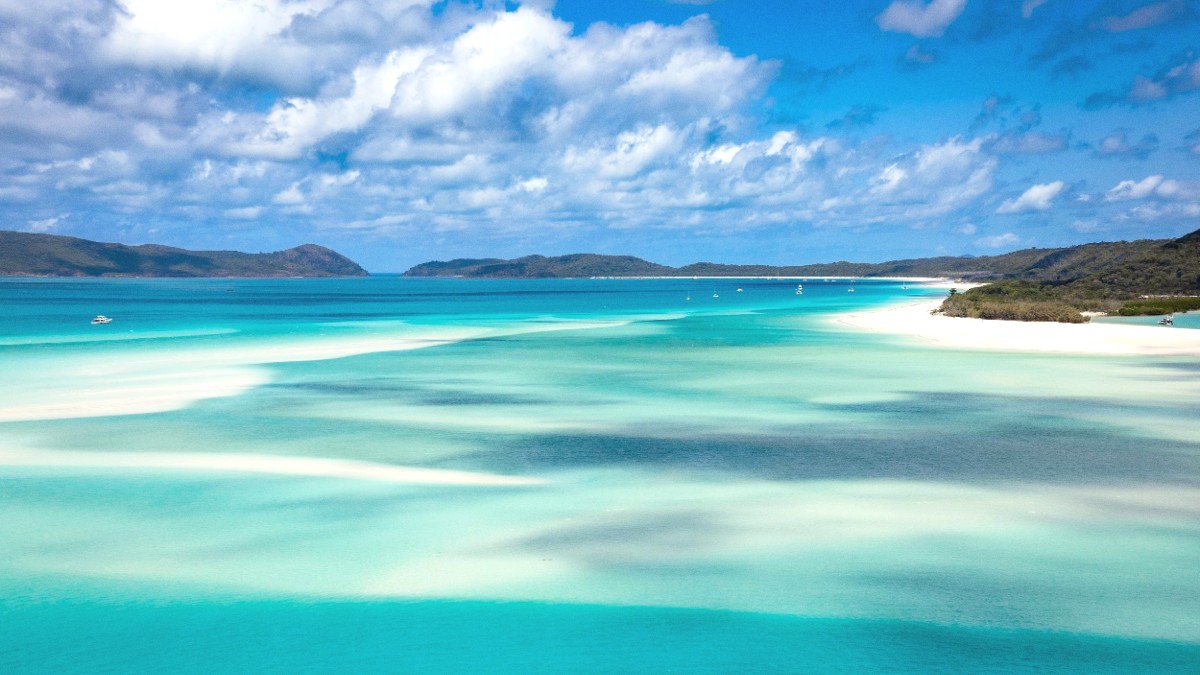
Queensland, Australia
Dry Season (Winter): This runs from May to October. Average temperatures generally range from 18°C to 25°C (64°F to 77°F). Expect low humidity, abundant clear skies, and minimal rainfall. This period offers pleasant conditions for all outdoor activities.
Water temperatures remain warm enough for swimming and snorkeling, usually around 22-25°C (72-77°F). The sea tends to be calmer, providing better visibility for snorkeling and diving.
Tropical Cyclones: These systems occur mainly during the wet season (November to April), with peak activity typically from January to March. Monitor weather forecasts closely if traveling during this time.
Marine Stingers: These organisms are present year-round in the ocean, but become more prevalent and dangerous during the wet season, roughly from November to May. Protective stinger suits are highly recommended or required for ocean swimming and snorkeling.
December to March
Lowest prices for accommodation and tours; strong waterfall flows.
High humidity, significant rainfall, peak tropical cyclone risk, prevalent marine stingers.
April and November
Pleasant weather, fewer crowds, potentially lower prices.
Unpredictable weather transitioning between seasons.
May to October
Ideal weather for outdoor activities, calm seas, low humidity, lowest stinger risk.
Higher prices, larger crowds, tours fill quickly.
Sailing, snorkeling, and diving are best from May to October, with calm, clear waters and less wind. Visibility for diving is typically at its peak.
Hiking and National Park exploration are ideal from May to October due to cooler temperatures and lower humidity. Walks feel more comfortable.
Humpback Whales migrate through the Whitsunday Passage from May to September.
An excellent opportunity to spot these magnificent creatures.
Look for dedicated whale watching tours during this period.
Many boat trips may offer glimpses of whales.
The dry season's calm waters enhance the experience.
Travelers to Australia, including Airlie Beach, must meet specific visa and entry requirements. Plan ahead, as visa processes take time.
Several visa options exist based on your nationality and purpose of visit. Applications are generally online.
Have these documents prepared for a smooth entry.
Plan your budget carefully for an Airlie Beach trip, as costs vary depending on your travel style. Australia uses the Australian Dollar (AUD).
Prioritize your health and safety when visiting Airlie Beach. Australia offers high standards of public health and safety, but awareness helps ensure a smooth trip.
No specific requirements unless from a yellow fever risk country. Routine vaccinations are recommended.
Use high-SPF (50+) Sunscreen, wear a Wide-brimmed hat (E.g., Columbia Bora Bora Booney), seek shade.
Stay hydrated; carry a Reusable water bottle (E.g., Hydro Flask).
Dial 000 for Police, Fire, or Ambulance.
Hospitals: Proserpine Hospital (25 km from Airlie Beach).
Medical Centers: Airlie Beach Medical Centre for GP services.
Pharmacies: Available in Airlie Beach and Cannonvale for medications.
Airlie Beach is generally safe with low crime rates. Use standard precautions, especially at night around entertainment venues.
Main risk is November to April. Monitor weather forecasts from the Bureau of Meteorology (BOM) and follow local authority instructions.
Be aware of strong ocean currents, especially around island passages. Swim within designated areas.
For urgent situations, immediate action points are available.
Airlie Beach is safe, but using precautions is always wise.
The Australian sun is intense. Apply high-SPF sunscreen frequently. Seek shade during peak hours (10 AM - 3 PM).
Mosquitoes and sandflies are present. Use repellent, especially around dawn and dusk or near bushland.
Declare all food, plant, and animal products upon arrival to protect Australia's unique environment.
Take photos of your passport, visa, and insurance documents.